NHS winter pressures: The picture across Wales
- Published
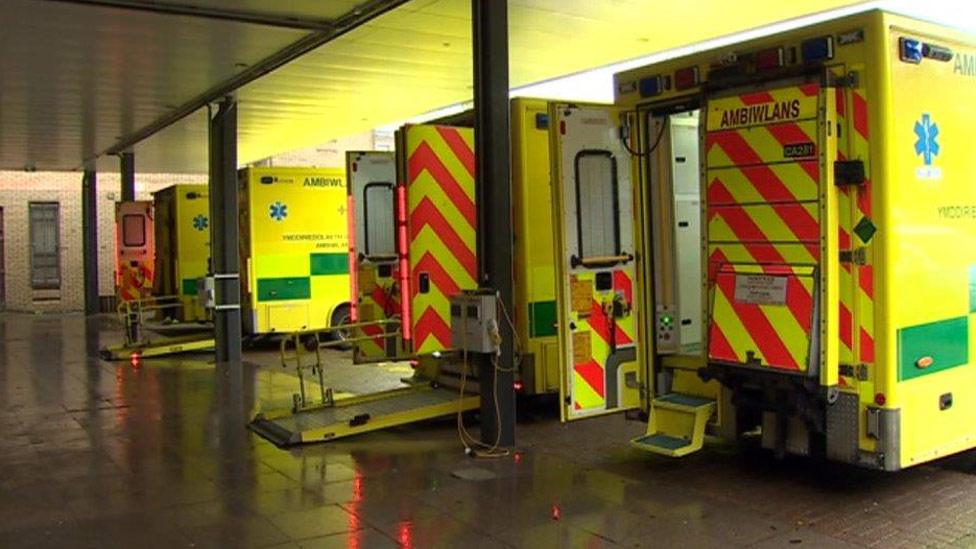
How is each health board in Wales coping with winter pressures?
We asked what was happening in your area.
ABERTAWE BRO MORGANNWG
Population: 523,100
Percentage of patients waiting under four hours: 75.4%
Percentage of population over 75: 8.8%
It is responsible for hospitals in Swansea, Neath and Bridgend - said it had been experiencing an increase in demand, compared to last year.
"In particular, we've seen a 32% increase in the number of ambulances arriving with the most urgent category of patients," said a spokeswoman.
"The number of emergency admissions have also risen by 6% when compared to last year."
The health board said it was "doing everything possible" to deal with the rising demand, including opening more beds, holding more clinics and working closely with social services.
Morriston Hospital in Swansea - a major trauma unit - had more than 40% of its A&E patients waiting more than four hours in December.

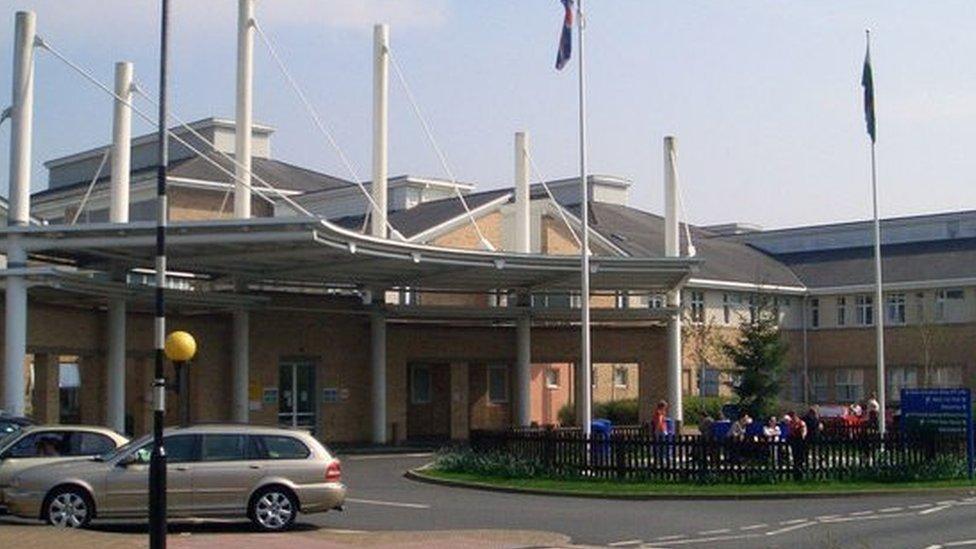
Royal Glamorgan Hospital had seen 4,873 patients at its A&E unit in December
CWM TAF
Population: 296,000
Percentage of patients waiting under four hours: 84.1%
Percentage of population over 75: 7.9%
The health board said the Royal Glamorgan Hospital in Llantrisant and Prince Charles Hospital in Merthyr Tydfil had been experiencing "significant pressures" over the past two weeks.
Handover issues had been highlighted in Wales recently but Cwm Taf said it had a zero tolerance policy.
"Patients will not be held in ambulances outside either of our district general hospitals even if space is constrained within the department as we strongly believe it is important to release ambulances quickly to respond to 999 calls in the community," said a spokesman.
"At times of peak demand, patients may be in corridor areas of the A&E department awaiting placement in a cubicle or admission to a bed.
"However, all patients are seen and assessed as soon as they arrive at the emergency department and we ensure all those who require urgent attention are treated promptly."
It also said a limited number of routine, non-urgent operations had been cancelled.

ANEURIN BEVAN
Population: 580,400
Percentage of patients waiting under four hours: 80.9%
Percentage of population over 75: 8.4%
From last November, hospitals have experienced a 7% increase in emergency admissions - which is around an extra 70 patients a week.
The health board said it was seeing a typical pattern of illnesses, including patients with cardio-respiratory problems, trauma and an increase in frail elderly patients.
Some routine elective surgery for children and adults has been cancelled but emergency and urgent operations have continued with no disruption.
About 30% of patients at A&E at one of its two main general hospitals, the Royal Gwent in Newport, were seeing waits of more than four hours.
Patients with minor injuries are being pointed to units at Ysbyty Ystrad Fawr in Ystrad Mynach or Ysbyty Aneurin Bevan in Ebbw Vale.
A spokesman said: "Our hospitals remain under a great deal of pressure and we have opened extra capacity across the health board in accordance with our winter plans to help manage the recent increase in demand for services."

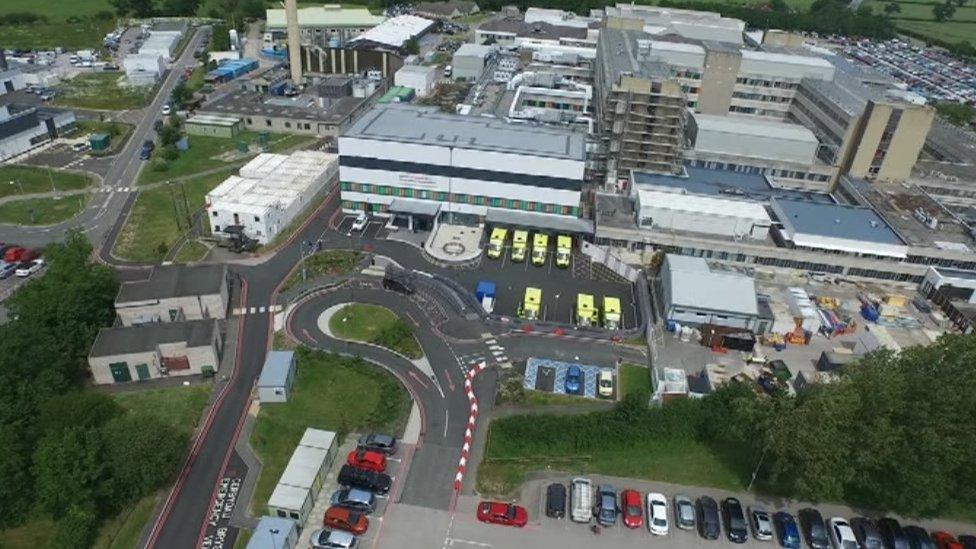
The latest figures do not include Ysbyty Glan Clwyd in Denbighshire for technical reasons
BETSI CADWALADR
Population: 694,000
Percentage of patients waiting under four hours: 80.2%
Percentage of population over 75: 9.8%
The health board covering the whole of north Wales said it had been redirecting some ambulances between the hospitals to help balance peaks in demand.
It had put additional staffing and bed capacity in place and had launched an app to show patients the waiting times at different emergency departments.
The region's busiest A&E unit, at Wrexham Maelor, saw more than 5,000 patients in December - 71.1% within four hours but 234 patients waited more than 12 hours.
Around a quarter of A&E patients at Ysbyty Gwynedd in Bangor waited more than four hours.

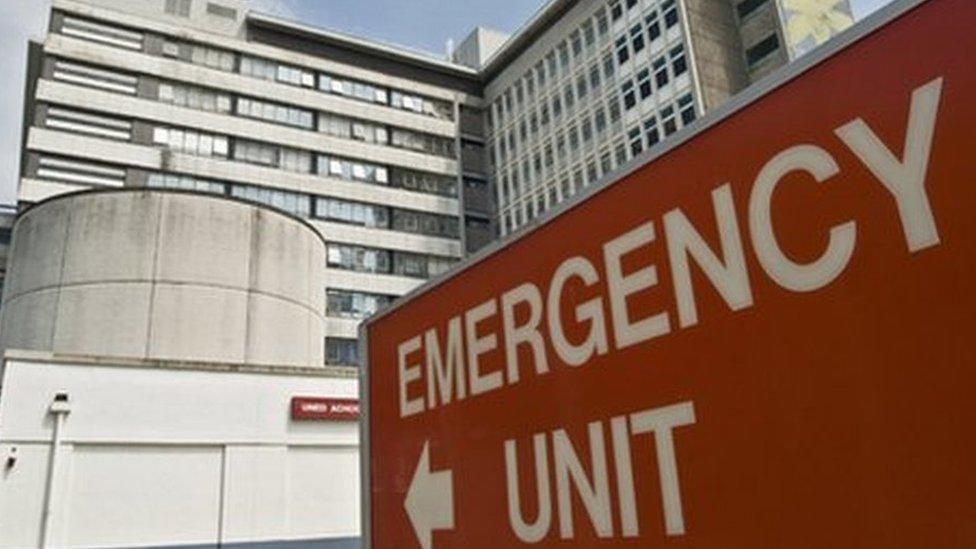
Cardiff's University Hospital of Wales has Wales' busiest A&E unit but 80% are seen within four hours
CARDIFF AND VALE
Population: 481,900
Percentage of patients waiting under four hours: 81.1%
Percentage of population over 75: 7.3%
The health board said the rise in more seriously-ill patients attending A&E was "most significant". This is equivalent of an extra five ambulances a day compared to last year.
"Despite this pressure, our services remain resilient and we continue to deploy our winter plans," said a spokesman.
Its waiting time performance was the same as last year and cancelled operations due to bed unavailability was lower than previous years at below 2%.
Two winter wards with 41 additional beds have been opened. The A&E department at Wales' biggest hospital - UHW in Cardiff - saw nearly 10,500 patients in December.
"We continue to experience periods of extreme pressure and we would thank members of the public for continuing to exercise judgement in using community alternatives to emergency care at this time," said a spokesman.

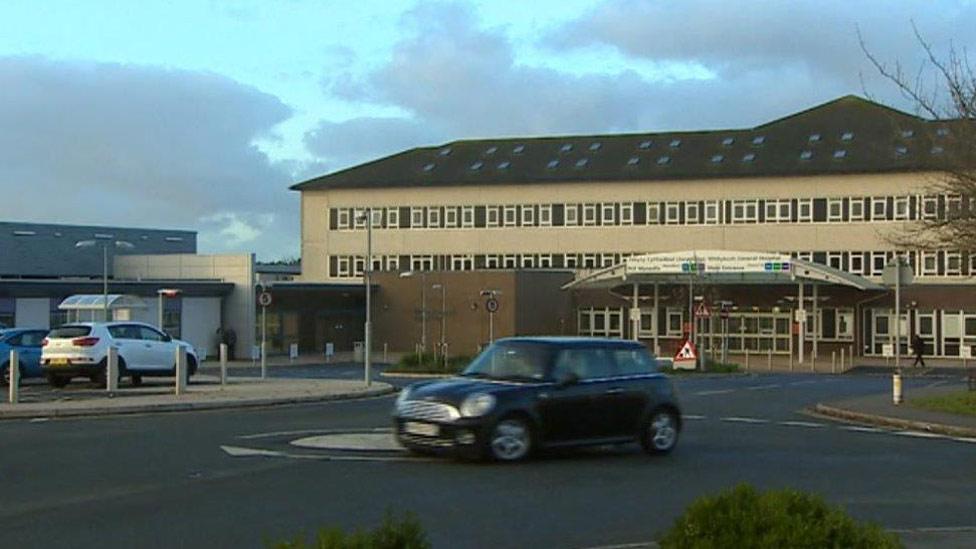
Withybush hospital in Haverfordwest. The proportion of over 75s in Pembrokeshire is 10.7%
HYWEL DDA
Population: 384,000
Percentage of patients waiting under four hours: 84.2%
Percentage of population over 75: 10.2%
In mid and west Wales said numbers attending A&E departments "remains consistently higher" and all hospitals remain "under significant pressure".
"We apologise to all our patients who have experienced long delays and we are working hard to manage current pressures," said Joe Teape, director of operations.
"We are unfortunately having to cancel some non-urgent planned operations and this is under constant review to minimise the disruption to patients."
The main A&E departments at hospitals in Aberystwyth, Haverfordwest and Carmarthen have all seen more patients attending than the previous December.

POWYS
Population: 132,600
Percentage of patients waiting under four hours: 99.9%
Percentage aged over 75: 11.4%
There are no general hospitals in the county but the health board was focusing on reducing inappropriate demand on acute services and improving flow of patients in the acute care system.
Its winter plan includes community teams and "virtual wards" to give people the best care at home.

Vanessa Young, director of the Welsh NHS Confederation, which represents health boards and trusts, said the increase in older patients with serious and complex conditions had been significant.
"A&E waiting times are impacted by a number of factors, including the complexity of the care patients need, the ability of the NHS to work with partners to avoid hospital admissions, the length of time patients need to spend in hospital and how they are supported once they have been discharged," she said.
"Staff are working tirelessly with colleagues in primary care, social services, the Welsh Ambulance Service and the voluntary sector to meet patients' needs during this very busy winter period."
- Published18 January 2017

- Published18 January 2017
